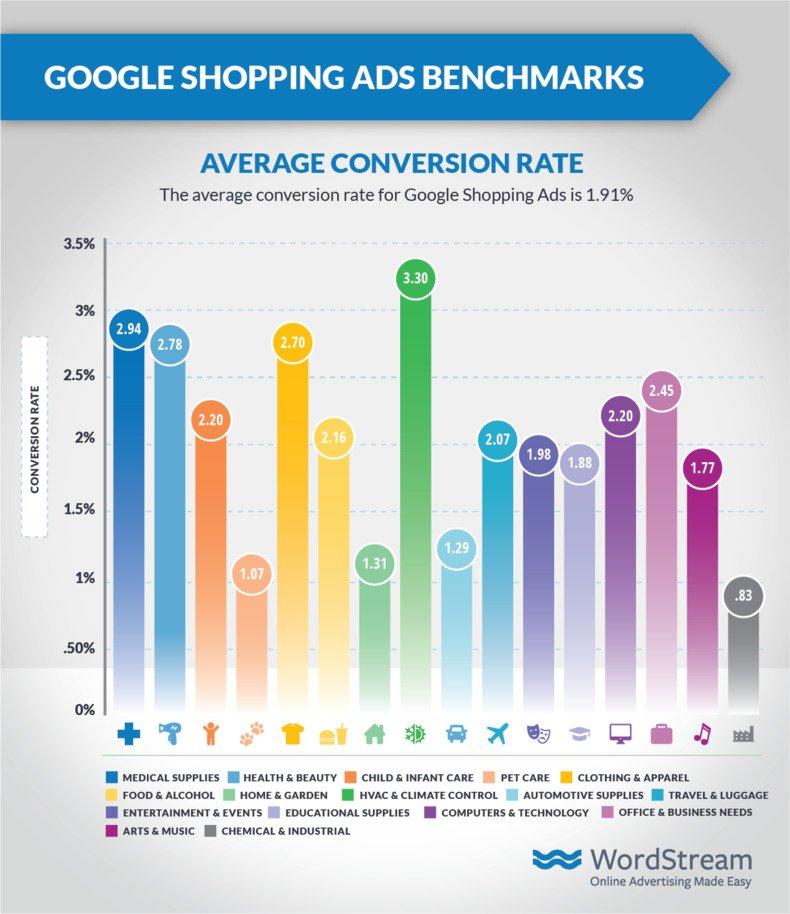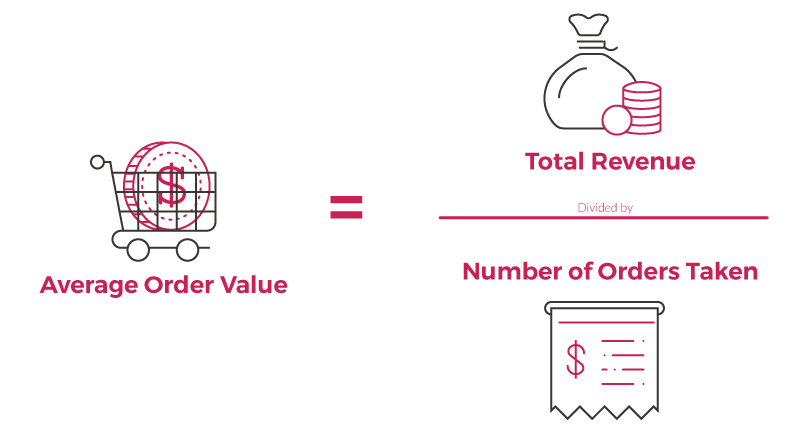Selling things online has never been both easier and harder.
On one hand, you have platforms like Amazon, eBay, and Etsy, all of which have lowered the barrier to entry for aspiring online merchants.
On the other hand, succeeding as an online store operator means having to track a lot of data, which is much easier said than done.
The most successful ecommerce businesses are the ones that can harness metrics to make informed decisions.
These metrics, in turn, tell you everything you need to know about your store’s performance, from the number of sales by day, week, and month, to the average value of all items purchased at any given time.
This, however, doesn’t mean that you should be tracking and optimizing every metric at your disposable. The key is to know the metrics that make the biggest impact on your ecommerce venture.
To point you in the right direction, here’s a list of the seven most important ecommerce metrics you should be tracking and optimizing today.
1. Sales Conversion Rate
Your ecommerce sales conversion rate is, simply put, the percentage of people who visit your online store or page who make a purchase.
To calculate your conversion rate, use the following formula:

So, if 1,000 people visited your store this week and only 10 people made a purchase, your conversion rate for the week would be 1%.
Obviously, you’d want as high a conversion rate as possible.
But the truth is that the average ecommerce conversion rate in the U.S. is much lower than you think – between 2% and 3%.
According to WordStream, however, you might fair better with Google Shopping Ads.

Now for the big question: How can I improve my conversion rate?
This is a huge topic in itself, but a few things you can try include:
- Speeding up your product pages.
- Upload high-quality images of your products
- Optimize product listings using keywords
2. Website Traffic
Once you’ve tracked and optimized your conversion rate, you can then look at bringing more people to your ecommerce store.
This is where measuring website traffic comes in.
Let’s go back to your conversion rate of 1%, or 10 purchases for every 1,000 visits. After optimization, let’s suppose this rate increased to 5% – 50 sales for every 1,000 visitors.
We can then infer that if you were to get 10,000 people to visit your site, you would also multiple your sales tenfold.
This isn’t a guarantee, of course, but it’s nevertheless important to ensure that people know your online store or page exists to maximize your likelihood of generating more sales.
To grow your website traffic, you can:
- Promote your offerings on social media.
- Optimize your site/store for search engines.
- Grow the number of people subscribing to your newsletter.
3. Email Opt-in Rate
Even in today’s social media age, email marketing continues to be one of the most important tools for ecommerce, particularly when it comes to remarketing and generating repeat business.
According to Campaign Monitor, email marketing delivered an ROI of 4400% in 2016 and their 2018 annual report revealed 59% of marketers believe email delivers the highest ROI of all marketing channels:

Similar to website traffic, the idea is to get as many people on your email list, even if they don’t necessarily purchase your products right away.
But unlike ordinary website/page visitors, people who sign up to your newsletter care enough about your brand to get updates on your products and services. This means they are also more likely to become paying customers in the near future.
One way to get people to subscribe to your emails is to offer something of value in exchange for your audience’s email addresses and contact information.
For example, you can offer an exclusive deal (e.g., a voucher or code) to first-time subscribers on their next purchase.
4. Customer Lifetime Value

Customer lifetime value (CLV) measures the total amount of what you earn from an average customer over their lifetime.
For example, if a typical customer makes six transactions, each one worth $30, throughout their life, your CLV would be $180. Note that you still have to deduct your acquisition costs from this number, which brings us to the next point.
Your CLV is important because it serves as a benchmark for how much you can spend to acquire customers and the lengths you should go to keep them.
To increase your online store’s CLV, you can work on improving your average order value (more on this later) and engendering loyalty among your existing customers so they become repeat buyers.
5. Average Order Value
Obviously, you want your customers to spend as much as possible on your online store.
As the name suggests, your average order value refers to the average value of each purchase made in your store.
To calculate yours, simply divide the sum value of all sales by the number of carts.

Tracking your average order value allows you to set benchmarks and figure out how to get people to spend more on every purchase they make.
Here are a few ways to drive this metric up:
- Upsell your customers complementary items that improve the usability of their primary purchase.
- Offer products as a package so customers get a small discount on each item as opposed to buying them separately.
- Offer free shipping on purchases above a certain threshold to entice customers to maximize their spending.
6. Customer Acquisition Cost
While growing your customer base is obviously important, it’s also just half of the equation.
If you’re spending an average of $30 to acquire every customer but your average order value is only $25, that means your business is still operating at a loss.
This is where measuring your Customer Acquisition Cost (CAC) comes in.
Your CAC tracks the average cost of gaining one customer, including everything from marketing and sales costs to the cost of paying your staff and hosting your site.
This will give you an overall figure, but you can also calculate your CAC by source (e.g. different traffic channels like search engines, social media, or email list).
To bring down your CAC, you can:
- Improve your conversion rate.
- Optimize your advertising to spend less for every acquired customer.
- Invest in free/organic marketing like SEO and social media marketing.
- Invest in referral marketing to encourage existing customers to bring in new customers.
7. Shopping Cart Abandonment Rate
This metric refers to the percentage of shoppers who add products to their cart but ultimately leave your store without completing the purchase.
These are window shoppers who are considering a purchase but haven’t quite made up their mind just yet.
Shopping cart abandonment is more common than you think. According to Barilliance, around 78% of shoppers abandon their carts.
This figure, however, can vary between industries. General retail, for example, has an abandonment rate of 72.8%, while fashion has 68.3%.

But even if your abandonment rate is roughly equal to these benchmarks, it’s still a good idea to do everything you can to bring it down.
- Simplify the shopping experience, particularly the checkout process, so customers can shop smoothly.
- Use remarketing to bring undecided shoppers back to your store. This can include targeted ads and follow-up emails.
Although this list of ecommerce metrics is by no means exhaustive, it’s at least a good starting point for any online store.
If you have a smaller online enterprise, you can start with primary metrics like average order value, customer lifetime value, and conversion rate.
As your store grows and gets more orders, your data points will also increase in number, giving you more data to track, measure, and improve.
And when you work on improving one metric, you’ll find that this leads to ripple effects on other metrics – for example, improving AOV helps you outpace your CAC.
Ultimately, tracking these metrics will help you make the best decisions for your ecommerce site.
More Resources:
Image Credits
In-post Image #1: Screenshot taken by the author, September 2019
In-post Image #2: WordStream
In-post Image #3: Campaign Monitor
In-post Image #4: Red Rocket Blog
In-post Image #5: Yotpo
In-post Image #6: Barilliance